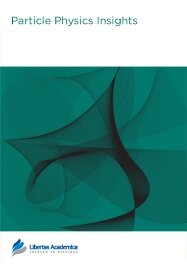

Publication Date: 11 Dec 2013
Type: Hypothesis
Journal: Particle Physics Insights
Citation: Particle Physics Insights 2013:6 1-7
doi: 10.4137/PPI.S12390

The harmonic neutron hypothesis states that all of the fundamental constants, when expressed as frequency equivalent coupling constant ratios, are related to the annihilation frequency of the neutron, vn 2.271859 × 10²³ Hz. The constants are interrelated by classic standing wave, harmonic number properties, and have classic quantum spectral characteristics. If vns is raised by the exponents of a consecutive integer quantum fraction (qf) series ([n ± 1]/n) for the principal quantum numbers, then n = 1 to ∞, representing many of the degenerate exponent values of the fundamental constants, including the quarks. The qf values have been shown to be symmetrically split by sign when plotted on an ln ln plane, similar to imaginary numbers. The hypothesis also states that, when plotted, the associated entities should align in linear patterns, and their principal quantum numbers should simultaneously be products of smaller harmonic numbers for higher hierarchical particle generations. The slopes and intercepts of the lines are derived solely from the properties of hydrogen, and the neutron have been published and used to derive other constants. It has been previously predicted that the quarks are associated with the slope, defined by the line connecting the points for Planck’s constant (−1, 0) and (−1/3, known exponent of the ionization energy of hydrogen −2/3), which is referred to as the electromagnetic line, or em line, whose principal quantum number is 3. Assuming that the quarks fall on integer slope multiples of the line connect (1, 0), the inverse slope of the em line, the quark values can be derived and compared to the known values. The quarks, sign, principal quantum numbers, quantum fractions, and known and predicted eV values include: up (−10, 9/10, 1.7–3.1 MeV, 2.3 MeV); down (−11, 10/11, 4.1–5.7 MeV, 4.7 MeV); strange (−30, 29/30, 100; +30 or −20 MeV, 106.6 MeV); charm (109, 110/109, 1,290; +50 or –110 MeV, 1,280 MeV); bottom (32, 33/32, 4190 +180 or −60 MeV, 4,214 MeV); and top (10, 11/10, 172.9 ±1.5 GeV, and 172.2 GeV). The three harmonic numbers associated with the quarks are 3, 10, and 11. The strange quark is related to the product of 3 and 10, the bottom quark 3 and 11, and the charm quark 10 and 11. The paper explains the origin and rationale for the mass equivalents of the quarks and makes predictions of more accurate values than are known.
PDF (1.53 MB PDF FORMAT)
RIS citation (ENDNOTE, REFERENCE MANAGER, PROCITE, REFWORKS)
BibTex citation (BIBDESK, LATEX)

I find Ophthalmology and Eye Diseases very author-friendly. As a first time author publishing in this journal I experienced close attention to authors, prompt and close co-operation in all phases of production of my manuscript encouraging. Your excellent staff simplified a daunting process that often makes authors just give up on publication due to unwarranted and irrational complexities, with close guidance to produce high quality work.
Facebook Google+ Twitter
Pinterest Tumblr YouTube